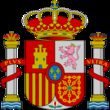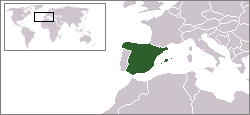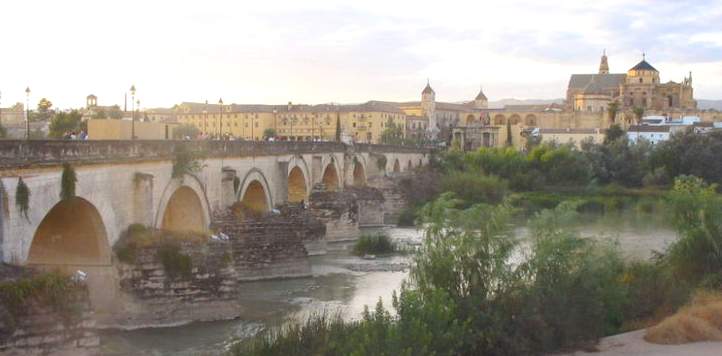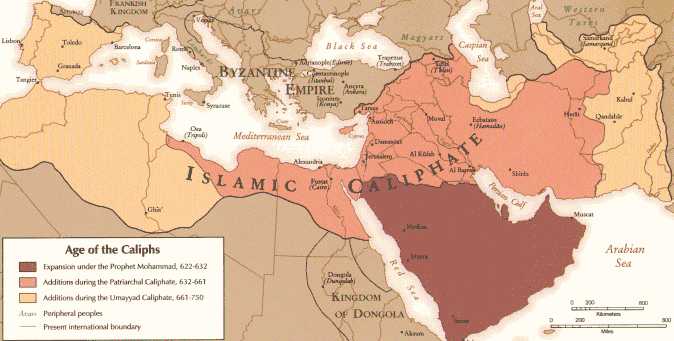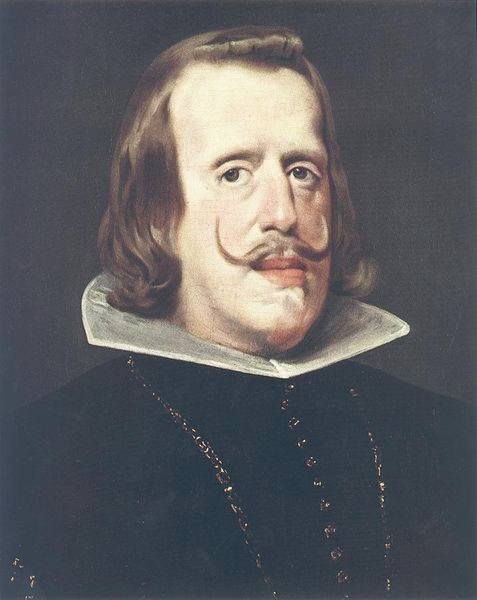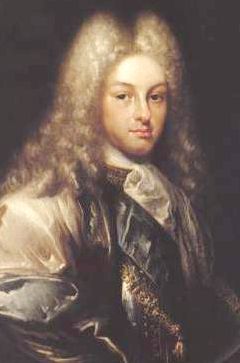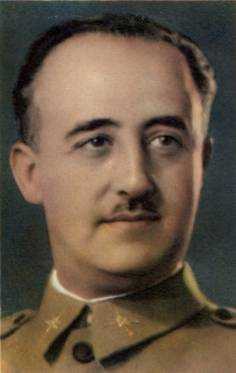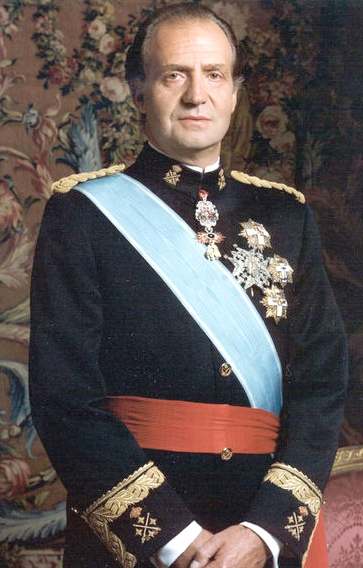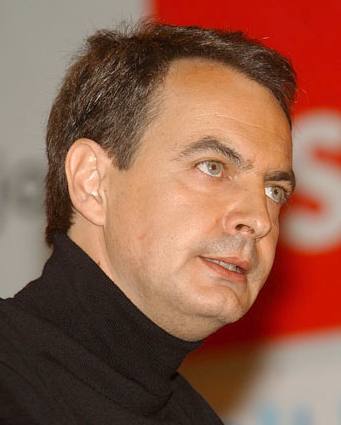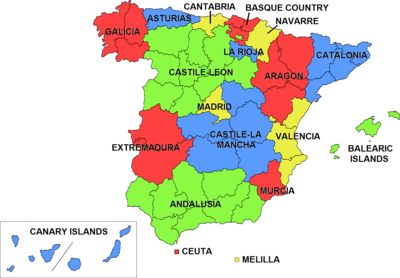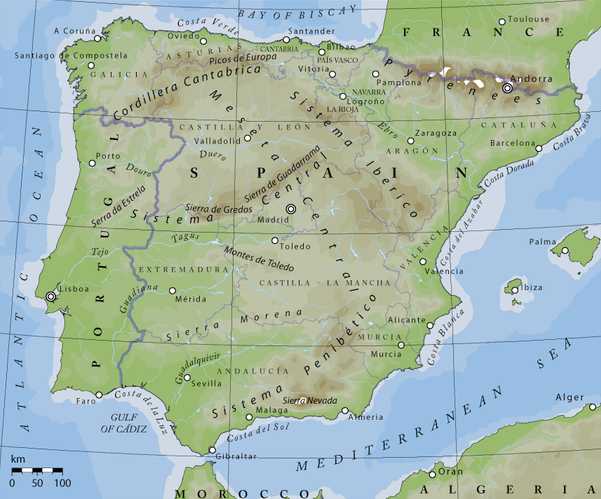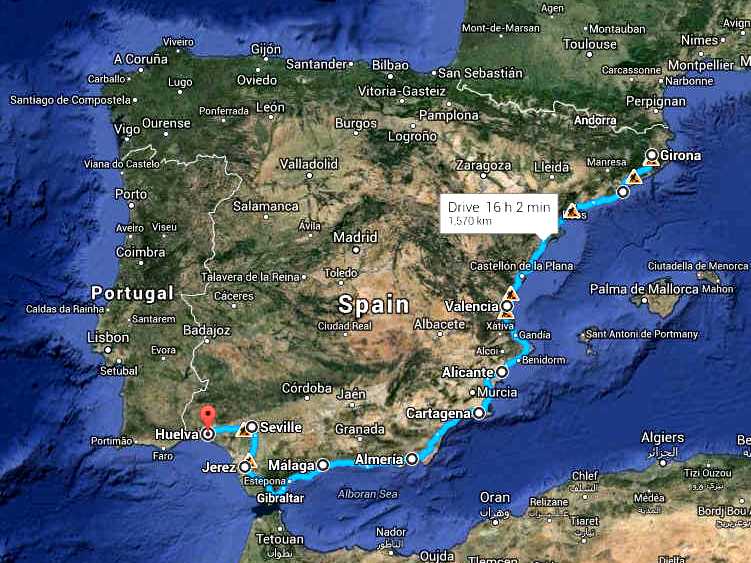|
SPAIN
|
||||||||||||||||||||||||||||||||||||||||||||||||||||||||||||||||||||||||||||||||||||||||||||||||||||||||||||||||||||||||||||||||||||||||||||||||||||||||||||||||||||||||||||||||||||||||||||||||||||||||||||||||||||||||||||||||||||||||||||
|
The Kingdom of Spain (Officially in Spanish España, unofficially in Galician:Reino de España; Catalan: Regne d'Espanya; Basque: Espainiako Erresuma; Occitan: Regne d'Espanha) is the largest of the three sovereign nations that make up the Iberian peninsula—the others are Portugal and Andorra—located in southwestern Europe. To the west and to the south of Galicia, Spain borders Portugal. To the south, it borders Gibraltar and, through its cities in North Africa (Ceuta and Melilla), Morocco. To the northeast, along the Pyrenees mountain range, it borders France and the tiny principality of Andorra. It also includes the Balearic Islands in the Mediterranean Sea, the Canary Islands in the Atlantic Ocean and a number of uninhabited islands on the Mediterranean side of the strait of Gibraltar, known as Plazas de soberanía, such as the Chafarine islands, the "rocks" (peñones) of Vélez and Alhucemas, and the tiny Isla Perejil (disputed). In the Northeast along the Pyrenees, a small exclave town called Llívia in Catalonia is surrounded by French territory.
History
Prehistory of the Iberian Peninsula
The indigenous peoples of the Iberian peninsula, consisting of a number of separate tribes, are given the generic name of Iberians. This may have included the Basques, as one of the pre-Celtic people. The most important culture of this period is that of the city of Tartessos. Beginning in the 8th century BCE, Celtic tribes entered the Iberian peninsula through the Pyrenees and settled throughout the peninsula, becoming the Celtiberians. The seafaring Phoenicians, Greeks and Carthaginians successively settled along the Mediterranean coast and founded trading colonies there over a period of several centuries. Around 1100 BCE, Phoenician merchants founded the trading colony of Gadir or Gades (modern day Cádiz) near Tartessos. In the 9th century BCE the first Greek colonies, such as Emporion (modern Empúries), were founded along the Mediterranean coast on the East, leaving the south coast to the Phoenicians. The Greeks are responsible for the name Iberia, after the river Iber (Ebro in Spanish). In the 6th century BCE the Carthaginians arrived in Iberia while struggling with the Greeks for control of the Western Mediterranean. Their most important colony was Carthago Nova (Latin name of modern day Cartagena).
Roman bridge in Cordoba
Roman Empire
The Romans arrived in the Iberian peninsula during the Second Punic war in the 2nd century BCE, and annexed it under Augustus after two centuries of war with the tenacious Celtic and Iberian tribes (from whom they copied the short sword) along with the Phoenician, Greek and Carthaginian coastal colonies becoming the province of Hispania. It was divided in Hispania Ulterior and Hispania Citerior during the late Roman Republic; and, during the Roman Empire, Hispania Taraconensis in the northeast, Hispania Baetica in the south and Lusitania in the southwest.
Hispania supplied the Roman Empire with food, olive oil, wine and metal. The emperors Trajan, Hadrian and Theodosius I, the philosopher Seneca and the poets Martial, Quintilian and Lucan were born in Spain. The Spanish Bishops held the Council at Elvira in 306. Many of Spain's present languages, religion, and laws originate from this period. It was the centuries of uninterrupted Roman rule and settlement that left the deepest and most enduring imprint upon the culture of Spain.
Muslim Iberia
In the 8th century, nearly all the Iberian peninsula, which had been under Visigothic rule, was quickly conquered (711 - 718), by Muslims (the Moors), who had crossed over from North Africa. Visigothic Spain was the last of a series of Christian and pagan lands conquered in a great westward charge from the Middle East and across north Africa by the religiously inspired armies of the Umayyad empire. Indeed this onslaught continued northwards until it was decisively defeated in central France at the Battle of Tours in 732. Astonishingly the invasion started off as an invitation from a Visgothic faction within Spain for support. But instead the Berber army, having defeated King Roderic, with its superior tactics and the help of internal infighting among the Visigoths, proceeded to conquer the entire peninsula for itself. Only three small counties in the mountains of the north of Spain managed to cling to their independence: Asturias, Navarra and Aragon, which eventually became kingdoms.
Despite internal discord, the Muslim emirate proved strong in its first three centuries - was able to stop Charlemagne's massive forces at Saragossa and, after suffering from a massive Viking surprise attack, was able to quickly establish effective defences at a time when they were the terror of Europe. Indeed it became a terror in its own right to Christian neighbours with its own "al-jihad fil-bahr" (holy war at sea), raiding shipping and coastal settlements for the purposes of looting and enslavement. The Christian kingdoms were able to seize the harsh depopulated lands north of the Duero river from their mountain redoubts, and the Franks were able to seize Barcelona (801) and nearby areas (Spanish Marches), but save for these and some other small incursions in the north, the Christians were unable to make headway against the superior forces of Al-Andalus for several centuries. War settled into a pattern of raids and retaliations. It was only in the 11th century, when Muslim Spain split into small warring kingdoms that the small Christian kingdoms were able to make large, sustained advances southward. By this stage the Christian kingdoms had attained such power that they were much more afraid of each other than of the Muslim kingdoms, and so a free-for-all fight, involving alliances and divisions which barely followed religious lines, developed among the Muslim and Christian kingdoms. In trying to increase their status, the Muslim taifa kings competed in patronage of the arts, and the Jewish population of Iberia set the basis of Sephardic culture. The distinctiveness of much Spanish art originates from the Muslim influence of this period, and many Arabic words made their way into Castilian (Spanish) and Catalan, and from them to other European languages. Later, even as Muslim Spain retreated southward, Mozarabs (Christians who spoke an Iberian tongue but used Arabic script to write it) and converts to Christianity brought with them the art and architecture of Muslim Spain into the Christian north.
The Moorish capital was Córdoba, in the southern portion of Spain known as Andalucía. During the time of Arab-Berber occupation, large populations of Jews, Christians and Muslims lived in close quarters, and at its peak some non-Muslims were appointed to high offices. At its best it produced exquisite architecture and art, and Muslim and Jewish scholars played a great part in reviving the study of ancient Greek and Roman culture and philosophy. However, there were also restrictions and prohibitions on non-Muslims, which tended to grow after the death of Al-Hakam II in 976. Later invasions of stricter Muslim groups from north Africa led to persecutions of non-Muslims, forcing some (including Muslim scholars) to seek safety in the then still relatively tolerant city of Toledo after its Christian reconquest in 1085.
The Age of the Islamic Empire
Spanish society under Muslim rule became increasingly complex, partly because Islamic conquest did not involve the systematic conversion of the conquered population to Islam. At the same time, Christians and Jews were recognized under Islam as "peoples of the book", and so given dhimmi status. Christianity and Judaism shared with Islam the traditionof the Old Testament, and Islam considered Jesus Christ a major prophet. Most importantly, the Islamic Berber and Arab invaders were a small minority, ruling over a few million Christians. Thus, Christians and Jews were free to practice their religion, but they had to pay a prescribed poll tax. They were not permitted to build new churches or synagogues, and clothing conventions were used to mark them out. Conversion to Islam proceeded slowly but steadily as it offered social and economic advantages to converts. After several centuries of conversion, Muslims may have begun to outnumber Christians in Al-Andalus.
The Roman Catholic Church in Muslim Spain continued to function, although it lost contact with religious reforms in Rome. Muslim Spain came to include a growing number of Mozarabic Christians, people who adopted Arabic script and culture and preserved the old Visigothic rites that differed from those of Rome. Under some Muslim rulers, Jews held prominent positions in commerce and the professions, and sometimes even positions in government.
The Muslim community in Spain was itself diverse and beset by social tensions, which ultimately was one of the principle causes of the fall of Al-Andalus. From the beginning, the Berber tribespeople of North Africa, who had provided the bulk of the soldiers, clashed with the Arabs of the Middle East, who formed the ruling elite. The Berbers, who were comparatively recent converts to Islam, accounted for the majority of Moors in Spain and they resented the sophistication and aristocratic pretensions of the Arab elite. They soon gave up attempting to settle the harsh lands of the northern reaches of the Meseta Central handed to them by the Arab elite, and, complaining of Arab duplicity, many returned to Africa during a Berber uprising against Arab rule. Meanwhile, many Christians in Spain, including Visigothic nobles, converted to Islam. Conversion was commonplace among merchants, large landowners, and other local elites. Drawn into the politics of Islamic power, many Christians found that conversion made it easier to maintain their influence.
Muslim Spain was wealthy and sophisticated under Islamic rule. Cordoba was the richest and most sophisticated city in all of western Europe. It was not until the 12th century that western medieval Christiandom began to reach comparable levels of sophistication, and this was due in part to the intellectual and commercial stimulus coming from Muslim Spain. Mediterranean trade and cultural exchange flourished. Muslims imported a rich intellectual tradition from the Middle East and North Africa, including knowledge about mathematics and science, and they helped revive in Europe the Greek philosophical tradition, which they continued to build upon in Spain. Crops and farming techniques introduced by the Arabs, including new irrigation practices, led to a remarkable expansion of agriculture, which had been in decline since late Roman times. In towns and cities, the Muslims constructed magnificent mosques, palaces, and other architectural monuments, many of which still stand today. Outside the cities, the mixture of large estates and small farms that existed in Roman times remained largely intact because Muslim leaders rarely dispossessed landowners. The Muslim conquerors were relatively few in number and so they tried to maintain good relations with their subjects. This relative social peace, which was already deteriorating from the late 10th century, broke down with the stricter, less tolerant, Muslim sects that arrived from the end of the 11th century.
Roman, Jewish, and Muslim culture interacted in complex ways. A large part of the population gradually adopted Arabic. Even Jews and Christians often spoke Arabic, while Hebrew and Latin were frequently written in Arabic script. These diverse traditions interchanged in ways that gave Spanish culture — religion, literature, music, art and architecture, and writing systems — a rich and distinctive heritage.
Life in Muslim Spain was very different from life in contemporary Christian Spain. Arabic was the official language of government, commerce and scholarship in Muslim controlled areas of Spain, and the majority of the population, including Christians and Jews, spoke it, though many were bilingual and the majority had been converted to Islam. However, as the 11th century drew to a close most of the north and centre of Spain came back under Christian control. The Fall of Muslim Rule
The long, convoluted period of expansion of the Christian kingdoms, beginning in 722, only eleven years after the Moorish invasion, is called the Reconquista. As early as 739, the north-western region of Galicia, which became one of the most important centres of western medieval Christian pilgrimage (Santiago de Compostela), had been liberated from Moorish occupation by forces from neighbouring Asturias. The 1085 conquest of the central city of Toledo had largely brought to an end the reconquest of the northern half of Spain. In 1086 the Almoravids, an ascetic Islamic sect from Africa, quickly conquered the small Moorish states in the south and then launched an invasion in which they captured the east coast as far north as Saragossa. This Islamic revival was short-lived, as by the middle of the 12th century the Almoravid empire had collapsed. The Battle of Las Navas de Tolosa in 1212 heralded the collapse of the great Moorish strongholds in the south, most notably Córdoba in 1236 and Seville in 1248. By the middle of the 13th century nearly all of the Iberian peninsula had been reconquered, leaving only Granada as a small tributary state in the south. It clung to its peripheral existence for two and half centuries when in 1492 Isabella and Ferdinand captured the southern city of Granada, the last Moorish city in Spain.
The Treaty of Granada [1] guaranteed religious tolerance toward Muslims while Spain's Jewish population of over 200,000 people was expelled that year. At Ferdinand's urging the Spanish Inquisition had been established in 1478. Behind much real religious intolerance lay the fear that the local Muslims might assist another Muslim invasion. Also Aragonese labourers were angered by landlords use of Moorish workers to undercut them. A 1499 Muslim uprising, triggered by forced conversions, was crushed and was followed by the first of the expulsions of Muslims, in 1502. The year 1492 was also marked by the discovery of the New World. Isabella I funded the voyages of Christopher Columbus. In their contests with the French army in the Italian Wars, Spanish forces under Gonzalo Fernández de Córdoba eventually achieved success, against the French knights, thereby revolutionizing warfare. The combined Spanish kingdoms of Castile and Aragon emerged as a European great power.
The reconquest from the Muslims is one of the most significant events in Spanish history since the fall of the Roman Empire. Arabic quickly lost its place in southern Spain's everyday life, and was replaced by Castilian. In the south the process of conversion was reversed from the 13th century: the majority Muslim population was gradually converted to Roman Catholicism. The mosques and synagogues were converted into churches. From the Renaissance to the 19th Century
Until the late fifteenth century, Castile and Léon, Aragon and Navarre were independent states, with independent languages, monarchs, armies and, in the case of Aragon and Castile, two empires: the former with one in the Mediterranean and the latter with a new, rapidly growing, one in the Americas. The process of political unification continued into the early sixteenth century. It was the unification of these separate Iberian empires that became the base of what is now referred to as the Spanish Empire.
Map showing dominion of the Habsburgs in green following the Battle of Mühlberg (1547) as depicted in The Cambridge Modern History Atlas (1912)
By 1512, most of the kingdoms of present-day Spain were politically unified by the crown, although not as a modern, centralized state (in contemporary minds, "Spain" was a geographic term meaning Iberian Peninsula, which includes Portugal, not the present-day state called Spain - its use, then, comparable to the use of the term "Britain"). The grandson of Isabella and Ferdinand, Charles V, Holy Roman Emperor but called in Spain Carlos I, extended his crown to other places in Europe and the rest of the world. The unification of Iberia was complete when Charles V's son, Philip II, became King of Portugal in 1580, as well as of the other Iberian states (collectively known as "Spain" at that time).
During the 16th century, early Habsburg Spain (i.e. the reigns of Charles V and Philip II) became the most powerful state in Europe. The Spanish Empire covered most territories of South and Central America, Mexico, some of Eastern Asia (including The Philippines), the Iberian peninsula (including the Portuguese empire from 1580), southern Italy, Sicily, Germany, and the Netherlands. It was the first empire about which it was said that the sun did not set. It was a time of daring explorations by sea and by land, the opening up of new trade routes across oceans, conquests and the beginning of European colonization. Not only did this lead to the arrival of ever increasing quantities of precious metals, spices and luxuries, and new agricultural plants, that had a great influence on the development of Europe, but the explorers, soldiers, sailors, traders and missionaries also brought back with them a flood of knowledge that radically transformed the European understanding of the world, ending conceptions inherited from medieval times. This Renaissance intellectual transformation is best seen in the influential School of Salamanca.
The treasure fleet across the Atlantic and the Manila galleons across the Pacific made it the wealthiest and most powerful nation in Europe, but the rapidly rising influx of silver and gold from the colonies in the Americas in the last decades of the 16th century ultimately resulted in economically damaging rampant inflation and led to economic depression by the 17th century. Religious and dynastic wars supported by the Spanish crown, especially in the Netherlands, also greatly burdened the empire's economy.
Philip IV Spanish King
In 1640, under Philip IV, the centralist policy of the Count-Duke of Olivares provoked wars in Portugal and Catalonia. Portugal became an independent kingdom again, taking with it its empire, and Catalonia enjoyed some years of French-supported independence but was quickly returned to the Spanish Crown, except Roussillon.
A series of long and costly wars and revolts followed in the early 17th century, and began a gradual decline of Spanish power in Europe from the 1640s.
Of note during the 17th century was the cultural efflorescence now known as the Spanish Golden Age. Spain had vast colonies in the Americas, stretching from Chile and Argentina to Central America and Mexico, to some states in the present-day United States. These included all of Florida, California, Arizona, New Mexico, and Texas, and parts of Oklahoma, Colorado and Wyoming. The influence of Spain on these cities is still evident in such cities as Los Angeles, California; Santa Fe, New Mexico; and San Antonio, Texas, as well as the Spanish language's dominance in these states (it is interesting to note that in New Mexico, Spanish is one of the official languages, along with English.)
Historically the period of the mid 17th century to the mid 20th century was a relative failure for Spain compared to north western Europe. The lingering, "decline of Spain" after a long period of considerable growth of population was due in large part, ironically, to its spectacular successes in the 15th and 16th centuries that led to the centuries of the treasure fleets. These shipments of silver engendered inflation that ate away at Spanish trades and commerce (never large or sophisticated in the harsh, thinly populated country - much of the manufactures and finance had always originated in third countries). This proved disastrous when the mines declined in output. Worsening matters were the wars defending the global empire against envious European rivals, internal successions and the European wars (Eighty Years War and Thirty Years War) in fighting for the Habsburg's dynastic and religious interests (Counter Reformation).
During the vast Thirty Years War the government sought to meet its needs by tampering with the silver content of the currency, leading to severe bouts of inflation and deflation. The financial instability led to the collapse of the Castilian economy and in 1628 Castilians resorted to bartering. A steep economic and demographic decline followed in the empire's plague ridden lynchpin, Castile. Many emigrated. Habsburg policies that had entrenched the privileges and exemptions of the nobility from the time of the Castilian War of the Communities (1518-1520), and the vast grants of land to the Church, helped to undermine the economy and curtail the spread of modern thought. The resentment of ordinary peasants and labourers would find expression in implicating the nobility of Moorish ancestry and the churchmen of hypocrisy and found its way into the theatre and literature. The growing beggary forced many to live by their wits, increasing the popularity of picaresque literature. This 17th century stagnation was mirrored in most of Europe, as the growing global oceanic trade, pioneered by the Iberian countries, was increasingly diverted to north-western Europe.
Philip V, First Bourbon King of Spain
Controversy over succession to the throne consumed the country and much of Europe during the first years of the 18th century.
It was only after this war ended and a new dynasty—the French Bourbons—was installed that a true Spanish state was established when the absolutist first Bourbon king Philip V of Spain in 1707 dissolved the parliamentarist Aragon court and unified the kingdoms of Castile and Aragon into a single, unified Kingdom of Spain, abolishing many of the regional privileges and autonomies (fueros) that had hampered Habsburg rule. The British abandoned the conflict after Utrecht (1713), which led to Barcelona's easy defeat by the absolutists in 1714. The National Day of Catalonia still commemorates this defeat.
Following the wars its commencement the 18th century saw a long, slow recovery, with an expansion of the iron and steel industries in the Basque Country, a growth in ship building, some increase in trade and a recovery in food production and a gradual recovery of population. The new Bourbon monarchy drew on the French system in trying to modernise the administration and economy, in which it was more successful in the former than the latter. In the last two decades of the century, with the ending of Cadiz's royally granted monopoly, trade experienced an extraordinary growth (from a relatively low base) which even witnessed the initial steps of an industrialisation of the textile industry in Catalonia. Spain's effective military assistance to the rebellious British colonies in the American War of Independence won it renewed international status. But this promising late eighteenth century resurgence was short-lived, being totally disrupted by the turmoil of the Napoleonic Wars at the beginning of the 19th century.
This initiated a period of turmoil that led to the loss of the vast mainland American territories and plunged the country into endemic political instability until 1939. The Napoleonic incursion led to a fierce guerilla war (Peninsular War) which saw the first wide spread manifestation of Spanish nationalism. The unexpectedly ferocious resistance to the invaders led to manifold atrocities being committed by the French soldiers. Some of these atrocities (and metaphoric references to them) were depicted by Goya the most celebrated artist of the period. The Romantic travellers saw in a backward Spain an exotic country, based on romantic 19th century mythmaking that was confirmed by the instability of the times. In the latter half of the 19th century Spanish Catalonia became the main centre of Spain's industrialization. Pockets of considerable modern industry would appear, especially in Catalonia, and the Basque country, but generally Spain's political instability and difficult geography made progress slow and extraordinarily uneven.
At the end of the 19th century, Spain lost all of its remaining old colonies in the Caribbean and Asia-Pacific regions, including Cuba, Puerto Rico, Philippines, and a large number of Pacific islands to the United States after unwittingly and unwillingly being thrust into the Spanish-American War of 1898.
"The Disaster" of 1898, as the Spanish-American War was called, gave increased impetus to Spain's cultural revival (Generation of '98) in which there was much critical self examination, and relieved it from the burden of its last major colonies. However political stability in such a dispersed and variegated land, caught between pockets of modernity and large areas of extreme rural backwardness and strongly differentiated regional identities would elude the country for some decades yet, and was ultimately imposed only by a brutal dictatorship in 1939.
Francisco Franco
20th century
The 20th century initially brought little peace; Spain played a minor part in the scramble for Africa, with the colonization of Western Sahara, Spanish Morocco and Equatorial Guinea. A military disaster in Moocco in 1921 contributed to discrediting the monarch and worsened political instability. A period of dictatorial rule (1923 - 1931) ended with the establishment of the Second Spanish Republic. The Republic offered political autonomy to the Basque Country, Catalonia and Galicia (where the autonomy did not have any effect due to the civil war) and gave voting rights to women.
However, in July 1936, against a backdrop of increasing political polarization, anti-clericalism and pressure from all sides, coupled with growing and unchecked political violence, including the murder of the prominent right-wing political figure José Calvo Sotelo by communist agents, the Republic was faced with an attempted military coup d'etat led by right-wing army generals. Although the coup initially failed, the ensuing Spanish Civil War ended in 1939 with the victory of the nationalist forces led by the ruthlessly efficient General Francisco Franco and supported by Nazi Germany and fascist Italy. The Republican side, receiving only tepid assistance from European democracies, was supported by the Soviet Union and volunteer International Brigades organized by the Communist Parties of other nations. The Spanish Civil War has been called the first battle of the Second World War.
After the civil war, General Francisco Franco ruled a nation exhausted politically and economically. Guerilla warfare in the countryside continued until 1950. During the Second World War, Franco, under extreme pressure (Hitler had brought his army to the border of Spain after invading France), opted to remain neutral arguing that Spain could not afford a new war, but, as a concession to his civil war backer, authorised volunteers to go to the Russian front to fight the Soviet Union in an anti-Communist crusade in what came to be known as the Blue Division. On the other hand tens of thousands of Spanish refugees in France, many of them experienced anti-fascist soldiers and guerrilla fighters, played a leading role in the French resistance. [2] The resentment of Franco's brutality towards the more industrialized pro-Republican regions of Catalonia and the Basque country, whose distinctive languages and identities he suppressed during his long reign, continues to fuel strong separatist movements to this day.
The only official party in Spain at the time of Franco’s regime was the Falange party founded by Jose Antonio Primo de Rivera. Primo de Rivera denied his party was fascist, calling fascism fundamentally false. His political philosophy was based on Catholicism, saying that man "carries eternal values" and carries "a soul that is capable of damning or saving itself". He called for "the greatest respect for... human dignity, for the integrity of man and for his liberty." Primo de Rivera called for what he called "organic democracy", which amounted for all intents and purposes to the fascism he repudiated. Jose Antonio Primo de Rivera was executed in Alicante in 1936.
After World War II, being one of few surviving fascist regimes in Europe, Spain was politically and economically isolated and was kept out of the United Nations until 1955, when it became strategically important for U.S. president Eisenhower to establish a military presence in the Iberian peninsula. This opening to Spain was aided by Franco's opposition to communism. In the 1960s Spain began to enjoy economic growth (Spanish miracle) which gradually transformed it into a modern industrial economy with a thriving tourism sector. Growth continued well into the 1970s, with Franco's government going to great lengths to shield the Spanish people from the effects of the oil crisis.
Upon the death of General Franco in November 1975, his personally-designated heir Prince Juan Carlos assumed the position of king and head of state. With the approval of the Spanish Constitution of 1978 and the arrival of democracy, some regions — Basque Country, Navarra— were given complete financial autonomy, and many — Basque Country, Catalonia, Galicia and Andalusia— were given some political autonomy, which was then soon extended to all Spanish regions, resulting in a quite decentralized territorial organization in Western Europe. Remaining dysfunctions, such as unlimited financial strain on contributor regions such as Catalonia make their people aim for a more equilibrated system, such as those enjoyed in Germany, where financial contribution to the whole can never exceed 4% of a Land's GDP. In the Basque Country moderate Basque nationalism coexist with radical nationalism supportive of the terrorist group ETA, which remains one of the biggest problems faced by Spanish citizens.
Adolfo Suárez González, Leopoldo Calvo-Sotelo Bustelo (after an attempted coup d'état on 23 February 1981), Felipe González Márquez (when Spain joined NATO and European Union), José María Aznar López and José Luis Rodríguez Zapatero have been presidents of the government of Spain.
21st century
On March 11, 2004, a series of bombs exploded in commuter trains in Madrid, Spain. These resulted in 192 people dead and 1,460 wounded. It also had a significant effect on the upcoming elections in Spain, due in part to the ruling government's insistence that the ETA was the prime suspect in the bombings, even as the evidence of Muslim extremist terrorism rapidly emerged from the police investigation and the international press.
King Juan Carlos I of Spain
Politics
Spain is a parliamentary monarchy, with a hereditary monarch and a bicameral parliament, the Cortes Generales. The executive branch consists of a Council of Ministers presided over by the President of Government (comparable to a prime minister), proposed by the monarch and elected by the National Assembly following legislative elections.
The legislative branch is made up of the Congress of Deputies (Congreso de los Diputados) with 350 members, elected by popular vote on block lists by proportional representation to serve four-year terms, and a Senate or Senado with 259 seats of which 208 are directly elected by popular vote and the other 51 appointed by the regional legislatures to also serve four-year terms.
Spain is, at present, what is called a State of Autonomies, formally unitary but, in fact, functioning as a Federation of Autonomous Communities, each one with different powers (for instance, some have their own educational and health systems, co-official language and particular cultural identity) and laws. There are some differences within this system, since power has been devolved from the centre to the periphery asymmetrically, with some autonomous governments (especially those dominated by nationalist parties) seeking a more federalist—or even confederate—kind of relationship with Spain, now the Central Government is dealing with autonomous governments for the transfer of more autonomy. This novel system of asymmetrical devolution has been described as a coconstitutionalism and has similarities to the devolution process adopted by the United Kingdom since 1997.
José Luis Rodríguez Zapatero, Prime Minister of Spain
The terrorist group, ETA (Basque Homeland and Freedom), is attempting to achieve Basque independence through means, including bombings and killings of politicians, police, militaries and to scare off tourists (tourism is very important to the economy). They consider themselves a guerrilla organization. Although the Basque Autonomous government does not condone any kind of violence, their different approaches to the separatist movement are a source of tension between the federal and Basque governments.
On 17 May 2005, all the parties in the Congress of Deputies, except the PP, passed the Central Government's motion of beginning peace talks with the ETA with no political concessions and only if it gives up all its weapons. PSOE, CiU, ERC, PNV, IU-ICV, CC and the mixed group -BNG, CHA, EA y NB- supported it with a total of 192 votes, while the 147 PP parliamentaris objected. ETA declared a "permanent cease-fire" that came into force on March 24, 2006.
On February 20th 2005, Spain became the first country to allow its people to vote on the European Union constitution that was signed in October 2004. The rules state that if any country rejects the constitution then the constitution will be declared void. Despite a very low participation (42%), the final result was very strongly in affirmation of the constitution, making Spain the first country to approve the constitution via referendum (Hungary, Lithuania and Slovenia approved it before Spain, but they did not hold referenda).
On July 3rd 2005, Spain became the third country in the world to allow same-sex marriages (see same-sex marriage in Spain for more information about this).
Administrative divisions
Administratively, Spain is divided into 50 provinces, grouped into 17 autonomous communities and 2 autonomous cities with high degree of autonomy.
Autonomous communities of Spain
Autonomous communities
Spain consists of 17 autonomous communities (comunidades autónomas) and 2 autonomous cities (ciudades autónomas; Ceuta and Melilla).
Provinces
The Spanish kingdom has also a provincial structure. Spain is divided into 50 provinces (provincias). This structure is prior to that of the autonomous communities (dates back to 1833). Therefore, autonomous communities group provinces (for instance, Extremadura is made of two provinces: Cáceres and Badajoz). The autonomous communities of Asturias, the Balearic Islands, Cantabria, La Rioja, Navarre, Murcia, and Madrid (the nation's capital) are each composed of a single province. Traditionally, provinces are usually subdivided into historic regions or comarcas. Places of sovereignty
There are also five enclaves (plazas de soberanía) on and off the African coast: the cities of Ceuta and Melilla are administered as autonomous cities, an intermediate status between cities and communities; the islands of the Islas Chafarinas, Peñón de Alhucemas, and Peñón de Vélez de la Gomera are under direct Spanish administration.
The Canary islands, Ceuta and Melilla, although not officially historic communities, enjoy a special status.
Map of the Iberian Peninsula showing mainland Spain
Geography
Mainland Spain is dominated by high plateaus and mountain ranges such as the Pyrenees or the Sierra Nevada. Running from these heights are several major rivers such as the Tajo, the Ebro, the Duero, the Guadiana and the Guadalquivir. Alluvial plains are found along the coast, the largest of which is that of the Guadalquivir in Andalusia, in the east there are alluvial plains with medium rivers like Segura, Júcar and Turia. Spain is bound to the east by Mediterranean Sea (containing the Balearic Islands), to the north by the Bay of Biscay and to its west by the Atlantic Ocean, where the Canary Islands off the African coast are found.
Spain's climate can be divided in four areas:
Most populous metropolitan areas
Territorial disputes
Territories claimed by Spain
Spain has called for the return of Gibraltar, a British possession on its southern coast. It was conquered during the War of the Spanish Succession in 1704 and was ceded to Britain in perpetuity in the 1713 Treaty of Utrecht. An overwhelming majority of Gibraltar's 30,000 inhabitants want to remain British, as they have repeatedly proven in referenda on the issue. The UN resolutions (2231 (XXI) and 2353 (XXII)) call on the UK and Spain to reach an agreement to end the colonial status of Gibraltar. According to Spain, these resolutions overule the Treaty of Utrecht. There is also dispute regarding the demarcation line. Britain extended its control up to the 18th century picket line in 1939 after General Franco's victory made it seem likely that Spain would enter the Second World War on the Axis side. Gibraltar is officially a non-self governing territory or colony according to the UN.
Spanish territories claimed by other countries
Morocco claims the Spanish cities of Ceuta and Melilla and the uninhabited Vélez, Alhucemas, Chafarinas, and Perejil islands, all on the Northern coast of Africa. Morocco points out that those territories were obtained when Morocco could not do anything to prevent it and has never signed treaties ceding them. Spain claims that these territories are integral parts of Spain and have been Spanish or linked to Spain since before the Islamic invasion of Spain in 711 and returned to Spanish rule only a few years after the conquest of Granada. Spain claims that Morocco's only claim on these territories is geographical. Parallelism with Egyptian ownership of the Sinai (in Asia) or Turkish ownership of Istambul (in Europe) is often used to support the Spanish position.
Portugal does not recognize Spain's sovereignty over the territory of Olivenza. The Portuguese claim that the Treaty of Vienna (1815), to which Spain was a signatory, stipulated return of the territory to Portugal. Spain alleges that the Treaty of Vienna left the provisions of the Treaty of Badajoz intact.
Economy
Spain's mixed economy supports a GDP that on a per capita basis is 87% that of the four leading West European economies. The centre-right government of former Prime Minister Aznar worked to gain admission to the first group of countries launching the European single currency, the euro, on 1 January 1999. The Aznar administration continued to advocate liberalization, privatisation, and deregulation of the economy and introduced some tax reforms to that end. Unemployment fell steadily under the Aznar and Zapatero administration. It now is 8.7% (December 2005). This (still unacceptable) level must be seen in the light of levels of over 20% at the start of the 1990s. Growth of 2.4% in 2003 was satisfactory given the background of a faltering European economy, and has steadied since at an annualized rate of about 3.3% in mid 2005. The Prime Minister Rodríguez Zapatero, whose party won the election three days after the Madrid train bombings in March 2004, plans to reduce government intervention in business, combat tax fraud, and support innovation, research and development, but also intends to reintroduce labour market regulations that had been scrapped by the Aznar government. Adjusting to the monetary and other economic policies of an integrated Europe - and reducing unemployment - will pose challenges to Spain over the next few years. According to World Bank GDP figuresfrom 2004, Spain has the 8th largest economy in the world.
There is general concern that Spain's model of economic growth (based largely on mass tourism, the construction industry, and manufacturing sectors) is faltering and may prove unsustainable over the long term. The first report of the Observatory on Sustainability (Observatorio de Sostenibilidad) - published in 2005 and funded by Spain's Ministry of the Environment and Alcalá University - reveals that the country's per capita GDP grew by 25% over the last ten years, while greenhouse gas emissions have risen by 45% since 1990. Although Spain's population grew by less than 5% between 1990 and 2000, urban areas expanded by no less than 25% over the same period. Meanwhile, Spain's energy consumption has doubled over the last 20 years and is currently rising by 6% per annum. This is particularly worrying for a country whose dependence on imported oil (meeting roughly 80% of Spain's energy needs) is one of the greatest in the EU. Large-scale unsustainable development is clearly visible along Spain's Mediterranean coast in the form of housing and tourist complexes, which are placing severe strain on local land and water resources. Recent developments include the construction of reverse osmosis plants along the Spanish Costas, to probably meet over 1 % of Spain's total water needs. Other perennial weak points of Spain's economy include one of the lowest rates of investment in Research and Development, and in education in the EU. This is particularly worrying, given that the country's generally poorly-trained workforce is no longer as competitive in price terms as it was several decades ago. As a result, many manufacturing jobs are going abroad - mainly to Eastern Europe and Asia.
Demographics
The Spanish Constitution, although affirming the sovereignty of the Spanish Nation, recognizes historical nationalities.
The Castilian-derived Spanish (called both español and castellano in the language itself) is the official language throughout Spain, but other regional languages are also spoken. Without mentioning them by name, the Spanish Constitution recognizes the possibility of regional languages being co-official in their respective autonomous communities. The following languages are co-official with Spanish according to the appropriate Autonomy Statutes.
Catalan, Galician, Aranese (Occitan) and Spanish (Castilian) are all descended from Latin and some of them have their own dialects, some championed as separate languages by their speakers. A particular case is the Valencian, name given to a variety of Catalan, that also has the co-offical language status recognized in Autonomous Community of Valencia.
There are also some other surviving Romance minority languages: Asturian / Leonese, in Asturias and parts of Leon, Zamora and Salamanca, and the Extremaduran in Caceres and Salamanca, both descendants of the historical Astur-Leonese dialect; the Aragonese or fabla in part of Aragon; the fala, spoken in three villages of Extremadura; and some Portuguese dialectal towns in Extremadura and Castile-Leon. However, unlike Catalan, Galician, and Basque, these do not have any official status.
In the touristic areas of the Mediterranean costas and the islands, German and English are spoken by tourists, foreign residents and tourism workers. Recent African immigrants and large minority of their descendants speaks the official European languages of their homelands (whether Portuguese, English, French, or even Afrikaans).
According to the Spanish government there are 3.7 million legal foreign residents in Spain. More than 1,000,000 are Romanians, around 500,000 are Morrocan and another half a million are Ecuatorian, 270,000 are Colombian. There are also important numbers of British and German citizens. In 2005 alone, the immigrant population of Spain increased by 700,000 people. Spain has the highest immigration rate of the European Union. [3]
Many linguists claim that most of the Spanish language variants spoken in Latin America (Mexican, Argentinian, Colombian, Peruvian, etc. variants) descended from the Spanish spoken in south-western Spain (Andalusia, Extremadura and Canary Islands).
Identities
The Spanish Constitution of 1978, in its second article, recognizes historic entities ("nationalities," a carefully chosen word in order to avoid "nations") and regions, inside the unity of the Spanish nation. But Spain's identity is sometimes, in fact, an overlap of different regional identities, some of them even conflicting.
Castile is considered by many to be the "core" of Spain. However, this may just be a reflection of the fact that the Castilian national identity was the first one to be quashed by the Spanish Empire in the revolt of the Communards (comuneros) in 1518-1520.
The opposite is the case of a large part of Catalans, Basques and, in some measure, Galicians, who quite frequently identify, respectively, primarily with Catalonia, the Basque Country, and Galicia first, with Spain only second, or even third after Europe. For example, according to the last CIS survey, 44% of Basques identify themselves first as Basques (only 8% first as Spaniards); 40% of Catalans do so with their autonomous community (20% identify firstly with Spain), and 32% Galicians with Galicia (9% with Spain). Other regional groups, such as the Andalusians have strong, but not as strong identities. Almost all communities have a majority of people identifying as much with Spain as with the Autonomous Community (except Madrid, where Spain is the primary identity, and Catalonia, Basque Country, Galicia, and the Balearics, where people tend to identify more with their Autonomous Community). Even Castille-Leon has 57% of people regarding themselves as much Spaniards as they are Castilians.
The situation is even more confusing, since there are regions with ambiguous identities, like Navarre, Valencia, the Balearic Islands, the Canary Islands, etc. There has been a lot of internal migration (rural exodus) from regions like Galicia, Andalusia and Extremadura to Madrid, Catalonia, Basque Country and the islands.
Spain became a unified crown with the union of Castile and Aragon and the conquest of Granada in 1492, and the annexation of Navarre in 1515. Until 1714, Spain was a loose confederation of kingdoms and statelets under one king, until King Philip V (Felipe V) removed the autonomous status of the Aragonese crown. Navarre and the Basque Provinces, however, kept a high degree of autonomy within their legal and financial system (Fueros). Moreover, the creation of a unified state in the 19th and 20th centuries has led to the present situation, which is apparently simple, but sometimes extremely confusing. During the Second Spanish Republic (1931–1936), Catalonia, the Basque country and Galicia were given limited self-government, which was lost after the Spanish Civil War (1936–1939) and restored in 1978 during the transition to democracy.
Minority groups
Since the 16th century, the most important minority group in the country have been the Gitanos, a Roma group. Other historical minorities are Mercheros (or Quinquis) and Vaqueiros de alzada. The latter, meaning "mountain cattle ranchers" dwell in mountain ranges in the Principality of Asturias and have kept historically apart from the valley dwellers.
The number of immigrants or foreign residents has tripled to 3,691,547 in less than five years, according the latest figures (2005) of National Statics Institute. They currently make up around 8.5 % of the official total population. The rise of population in Spain in recent years was largely due to them. Nearly half of all immigrants have neither residence nor work permits.
As of October 2005, and according to the official Ministry of Labour data Permanent Immigration Observatory, there are 2,597,014 foreigners with valid residence permits, of which the largest are 552,694 EU citizens, also with 144,283 Britons, 473,048 Moroccans, 333,251 Ecuadorians, 192,965 Colombians and 174,590 Romanians.
Spain has also a number of black African-blooded people — first, descendants of slaves who were brought to the country before bringing them to its possessions in the Americas; second, descendants of the settlers from former colonies (including Equatorial Guinea) who chose to be in Spanish guidance; and third, children of immigrants from several African countries who settled Spain as contract workers.
A sizeable and increasing number of Spanish citizens (as Spain applies ius soli and provides special measures for immigrants from Spanish-speaking countries in order to acquire the citizenship) also descend from these communities.
Religion
Roman Catholicism is, by far, the most popular religion in the country. According to several sources (CIA World Fact Book 2005, Spanish official polls and others), from 80% to 94% self-identify as Catholics, whereas around 6% to 13% identify with either other religions or none at all. Spain is also the location of one of the Roman Catholic church's most important holy cities; Santo Toribio de Liébana, which holds the largest single piece of the true cross. It is important to note, however, that many Spaniards identify themselves as Catholics just because they were baptised, even though they are not very religious at all (in fact some polls show that 14% do not believe in any God). According to recent surveys (New York Times, April 19, 2005) only around 18 % of Spaniards regularly attend mass. Of those under 30, only about 14 % attend.
Further evidence of the secular nature of modern Spain can be seen in the widespread support for the legalisation of same-sex marriage in Spain - over 70% of Spaniards support gay marriage according to a 2004 study by the Centre of Sociological Investigations. Indeed, in June 2005 a bill was passed by 187 votes to 147 to allow gay marriage, making Spain the third country in the European Union to allow same-sex couples the same rights as heterosexual ones. This vote was split along conservative-liberal lines, with PSOE and other left-leaning parties supporting the measure and PP against it. Proposed changes to the divorce laws to make the process quicker and to eliminate the need for a guilty party are also popular. In truth, there is a growing rift between the urban areas of Spain and parts of the periphery, such as Catalonia, who support the secularisation of the state, and the rural areas and conservative parts of the periphery, like Galicia, who support keeping the social ideals inherent with their religious past.
According to membership [4], the second religion of Spain is the organization of the Jehovah's Witnesses with 103,784 active publishers; there are also many Protestant denominations, all of them with less than 50,000 members, and about 20,000 Mormons. Evangelism has been better received among Gypsies than among the general population; pastors have integrated flamenco music in their liturgy. Taken together, all self-described "Evangelicals" slightly surpass Jehovah's Witnesses in number. Other religious faiths represented in Spain include the Bahá'í Community.
The recent waves of immigration have led to an increasing number of Muslims, who have about 800,000 members. Muslims either converted in 1492 or given the option to leave. By the 16th century most of them had left the Spanish kingdom.
Since the expulsion of the Sephardim in 1492, Judaism was practically nonexistent until the 19th century, when Jews were again permitted to enter the country. Currently there are around 14,000 Jews in Spain, all arrivals in the past century. There are also many Spaniards (in Spain and abroad) who claim Jewish ancestry to the Conversos, and still practice certain customs. Spain is believed to have been about 8 % Jewish on the eve of the Spanish Inquisition.
Over the past thirty years, Spain has become a more secularised society. The number of believers has decreased significantly and for those who believe the degree of accordance and practice to their church is diverse.
According to the latest official poll (CIS, 2002), 80% of Spaniards self-identify as Catholic, 12% as non-believer, and 1% as other (the remaining 7% declined to state). Of the 1.4% identifying as other, 29% identified as Evangelical Christian, 26% as Jehovah's Witnesses and 3.5% as Muslim (the rest either mentioned smaller religions or declined to state). According to the same poll, 73% believe in God, 14% don't and 12% are unsure (1% declined to state). Additionally, according to this poll, only 41% believe in Heaven. 24% of the Spaniards think that the Bible is just a fable. Only 25% of Catholics go to church at least once a week.
In a more recent Eurostat "Eurobarometer" poll, in 2005 (http://europa.eu.int/comm/public), results were markedly different, as only 59% of Spanish citizens responded that "they believe there is a God", whereas 21% answered that "they believe there is some sort of spirit or life force" and 18% that "they do not believe there is any sort of spirit, God, or life force".
REFERENCES and LINKS
Spain: CIA World Factbook entry (updated January 27, 2005; info as available on January 1, 2004) iberianature a guide to the environment, geography, climate, wildlife, natural history and landscape of Spain AxJ updated political information of Spain Spain: The Economist Country Briefings entry (current) This article contains material from the Library of Congress Country Studies which, as a United States government publication, is in the public domain. [5] (1988) Government
Casa Real.es – Official site of the Spanish Royal Family La Moncloa.es — Prime Minister's official site administracion.es e-government Portal (Spanish) Congreso de los Diputados — Official site of the Congress of Deputies El Senado – Official site of the Senate Ministerio de Asuntos Exteriores Ministry of Foreign Affairs INEBase — National Institute of Statistics (Spanish) TourismTravel guide to Spain from Wikitravel Official Website of Tourism in Spain OtherProel.org — Languages of Spain History of Spain and the Spanish Language Information for Spain and the UK Telefonica telecomunications english Picture Gallery of Spain Top Sites to See https://www.google.co.uk/maps/preview
GIRONA - HUELVA: THE SPANISH COASTAL CANNONBALL ZEV RUN STOPS* 50mph
A new World series of ZEV events from 2015: The Cannonball International series. Entry to these events are free, provided that the Rules are followed (for you own safety). The objective is to demonstrate that transport can be pollution free. The Spanish coastal route is shown above. An inland route is also included, which is shorter by approximately 200 kms. For this event your target should be about 30 hours with instant cartridge recharging and 50 hours using rapid charging.
Solar Cola drinkers care about planet earth
.. Thirst for Life
(330ml Planet Earth can)
|
||||||||||||||||||||||||||||||||||||||||||||||||||||||||||||||||||||||||||||||||||||||||||||||||||||||||||||||||||||||||||||||||||||||||||||||||||||||||||||||||||||||||||||||||||||||||||||||||||||||||||||||||||||||||||||||||||||||||||||
|
This website is Copyright © 1999 & 2024 MEL. The bird logos and name Solar Navigator are trademarks. All rights reserved. All other trademarks are hereby acknowledged. Max Energy Limited is an educational charity working hard for world peace.
|
||||||||||||||||||||||||||||||||||||||||||||||||||||||||||||||||||||||||||||||||||||||||||||||||||||||||||||||||||||||||||||||||||||||||||||||||||||||||||||||||||||||||||||||||||||||||||||||||||||||||||||||||||||||||||||||||||||||||||||

